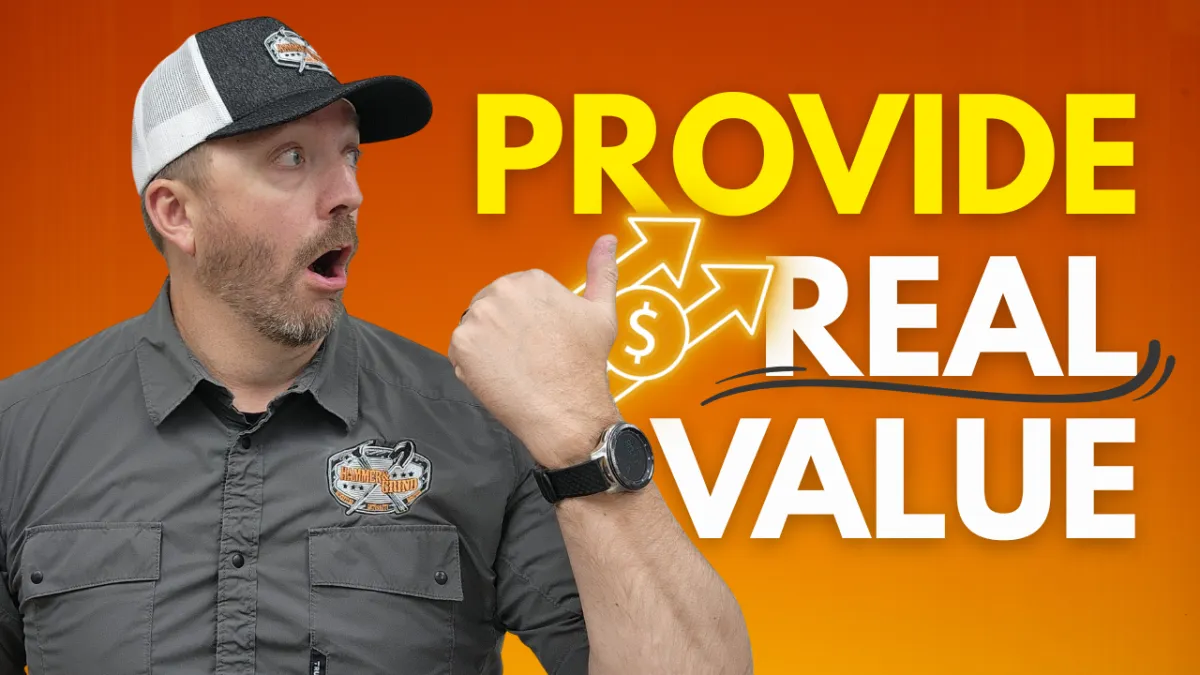
The Power of Providing Value in Sales: Lessons from the Paid Estimate Blueprint (Part 2)
In sales, especially in the construction and contracting world, it’s easy to believe that quality alone will win the job. But in reality, people buy based on how they feel, not just on what they get. In Part Two of The Paid Estimate Blueprint series on the Hammer & Grind podcast, Brad Huebner dives into “value stacking”, a concept that can radically change how contractors close deals and serve clients.
This episode isn’t just about selling, it’s about creating an experience so valuable that prospects can’t help but choose you. Let’s explore the key takeaways and how you can apply them to your own business today.
Key Insights
1. Understanding Value Stacking
Value stacking is the process of adding value at every touchpoint with your customer. From the moment they see your reviews or website to the interaction with your employees, every exposure should provide some form of value. This can be professional value, emotional value, or experience value. The goal is to build a stack of value that makes your business stand out.
2. The Importance of Customer Experience
One of the most critical points discussed is that customer experience often outweighs the quality of the product. How you make your clients feel during the sales process can be more important than the actual work you do. A phenomenal experience can make up for an average product, but a top-notch product cannot compensate for a poor experience.
3. Emotional Connection
Connecting with your clients on an emotional level is crucial. The podcast emphasizes that the sales process is not about showcasing your knowledge or awards but about making the client feel understood and valued. Emotional connections can be so powerful that they can lead to clients choosing you over competitors, even if your prices are higher.
4. The Role of Empathy
Empathy plays a significant role in providing value. Understanding your client's concerns, whether they are about their pets, kids, or neighbors, can set you apart from the competition. Tactical empathy, or using empathy strategically, can elevate your status in the eyes of your clients.
Action Steps
1. Implement Value Stacking
Start by evaluating every touchpoint your customer has with your business. Ensure that each interaction adds value. This could be through professional-looking websites, positive Google reviews, or well-maintained vehicles and uniforms. Each of these elements contributes to the overall perception of your business.
2. Focus on Customer Experience
Shift your focus from just delivering a quality product to providing an exceptional customer experience. Train your team to be courteous, punctual, and communicative. Make sure that your clients feel heard and valued throughout the process. Remember, a great experience can make up for an average product, but not vice versa.
3. Build Emotional Connections
Learn to connect with your clients on an emotional level. Ask questions that go beyond the scope of the project to understand their motivations and concerns. Use techniques like mirroring and labeling to show that you are genuinely interested in their needs. For example, if a client mentions they had a bad experience with a previous contractor, acknowledge it and assure them that you will communicate effectively to avoid similar issues.
Providing value in the sales process is not just about the product but about the entire experience you offer your clients. By implementing value stacking, focusing on customer experience, and building emotional connections, you can set your business apart from the competition. These strategies not only help in closing more deals but also in building long-term relationships with your clients.
If you're interested in learning more about these techniques, consider joining the Profit Club, where we delve deeper into these strategies and help you implement them in your business. Remember, the key to successful sales lies in the value you provide and the emotions you evoke in your clients.
Resources
Grab Brad's tell-all book: The Contractor Profit Blueprint
